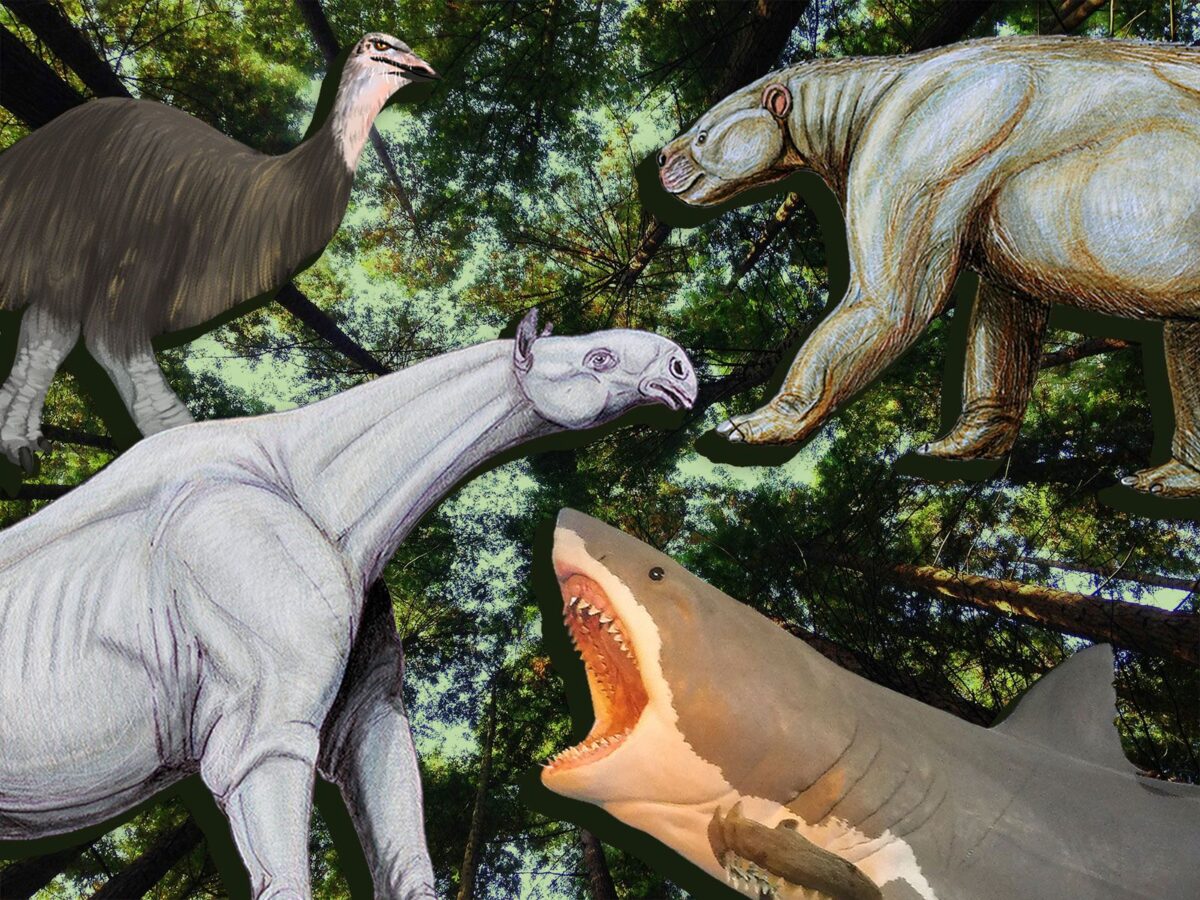How to Identify the Apex Dinosaur of Prehistoric Times
To identify the apex dinosaur of prehistoric times, examine fossil records for the largest predators. Study their habitat dominance and ecological role for confirmation.
Prehistoric ecosystems were complex arenas where mighty dinosaurs reigned supreme. Among these behemoths, the apex dinosaurs stand out as the top predators of their respective habitats.
These dinosaur elites were at the pinnacle of the food chain, often characterized by their imposing size, powerful build, and an arsenal of physical adaptations that allowed them to dominate other species.
Paleontologists deduce their status by analyzing fossil evidence, comparing skeletal structures, and understanding the dynamics of their environment.
Unearthing the secrets of these prehistoric champions involves piecing together clues from bone fragments, teeth marks on prey fossils, and nesting sites.
The discovery of an apex predator adds invaluable insight into the delicate balance of ancient ecosystems, revealing how these formidable creatures influenced the evolutionary paths of numerous other species.

Clues From Fossil Records
Determining the apex dinosaur of prehistoric times is a fascinating puzzle. Fossils hold vital clues.
These ancient remnants reveal much about the dinosaurs’ lives and environments. With careful study, paleontologists can piece together their formidable stature and behaviors. Let’s dig into the fossil records.
Examining Physical Structures
Fossil records are time capsules. They provide glimpses into dinosaurs’ physical traits. Large bones suggest powerful creatures.
Skulls with sharp teeth speak of predatory habits. Limb structures indicate agility and strength.
Key insights come from:
- Size and shape of bones
- Joint configurations for mobility insights
- Teeth and claw marks on fossils suggest hunting prowess
Comparing Predatory Features
An apex predator dominates its ecosystem. Fossils display features such as claws and teeth that can pinpoint a dinosaur’s rank in the food chain.
| Dinosaur | Features | Apex Status Clue |
|---|---|---|
| Tyrannosaurus Rex | Large jaws, serrated teeth | Top predator signs |
| Velociraptor | Sharp claws, agile build | Efficient hunter traits |
| Spinosaurus | Long snout, conical teeth | Specialized fish hunter |
Dinosaurs like the Tyrannosaurus Rex often surface as top contenders for the apex title. Comparative analysis of predatory adaptations is essential. This reveals the true rulers of ancient times.

Credit: phys.org
Ruling The Food Chain
An apex dinosaur topped the prehistoric food chain, dominating its environment. These powerful creatures controlled their ecosystems. Identifying them involves a detailed look at fossils and the story they tell about prehistoric life.
Insights From Bite Marks
Bite marks on fossils reveal fierce predator-prey relationships. Experts analyze the size and shape of bite marks to determine the dinosaur species responsible. They even gauge the strength and feeding behavior of the predator.
- T-rex teeth imprints suggest a mighty bite force.
- Distinctive scrapes on bones hint at feeding habits.
Study Of Prey Bones
Dinosaurs’ prey bones tell another part of the story. They show what and how often apex predators fed.
| Prey | Signs of Predation | What It Tells Us |
|---|---|---|
| Herbivores | Deep punctures | Large predator activity |
| Smaller Carnivores | Clean breaks | Competitive hunting grounds |

Territorial Dominance
In the prehistoric world, the Apex Dinosaurs ruled with absolute authority. Their reign over territories was undisputed, echoing with the stampede of their mighty footsteps. Understanding territorial dominance is key to identifying these rulers of the ancient Earth.
Nesting Sites & Distribution
Nesting sites tell tales of dominance within dinosaur species. Robust nests, frequently found in large clusters, indicated a species’ control over a region.
Scientists find these historical clues in fossil records, piecing together the prehistoric puzzle of geographic dominance.
- Apex predators often had widespread nesting sites.
- Common areas provide evidence of dominant feeding grounds.
- Location of nests in relation to resources suggests territorial reach.
Interactions With Other Species
The complex dynamics between different species reveal much about the pecking order of the time.
Apex predators secured their top spots not only through size and strength but also by how they interacted with or intimidated other creatures.
| Species | Behavior Indicating Dominance |
|---|---|
| Tyrannosaurus Rex | Hunted other large dinosaurs, dominated food chains. |
| Allosaurus | Scavenged and competed for territory fiercely. |
| Velociraptor | Used high intelligence, speed, to control niches. |
By examining fossils, we can see signs of battles fought, won, and sometimes lost, painting a picture of the ancient hierarchy.
Apex dinosaurs left their mark on those they hunted and the rivals they bested or chased away.
Paleoenvironmental Factors
Unlocking the secrets of dominant dinosaurs involves a deep dive into paleoenvironmental factors. These factors paint a vivid picture of ancient ecosystems.
We’ll explore how prehistoric climate and local wildlife provide clues about the apex predators of their time.
Climate Conditions
Climate has always shaped the lives of dinosaurs. By analyzing sediment layers, scientists can infer temperature and precipitation patterns from millions of years ago.
Climates dictate the types of dinosaurs that can thrive. For instance, warm and humid conditions favor large, herbivorous dinosaurs.
These conditions also support vast forests. Conversely, cooler climates may give rise to different predators well-adapted to these temperatures.
| Period | Climate Type | Apex Dinosaur Example |
|---|---|---|
| Jurassic | Warm, Humid | Allosaurus |
| Cretaceous | Varied, Cooler | Tyrannosaurus Rex |
Flora And Fauna Influence
Plants and other animals also play key roles. Abundant vegetation supports vast herds of herbivores.
This, in turn, allows large predators to thrive. Researchers track plant fossils and pollen to uncover these relationships. These traces reveal the nature of food chains and the potential apex predators at the top.
- Dense forests indicate large plant-eaters.
- These herbivores support huge carnivores.
- Fossil evidence helps to connect these dots.
Innovations In Paleontology
Paleontology has leaped forward with technological breakthroughs. These innovations help us uncover the mysteries of prehistoric giants.
Scientists can now identify apex dinosaurs more accurately than ever. With cutting-edge tools, they piece together our planet’s ancient past.
Advances In Dating Techniques
Dating fossils accurately is crucial. It tells us when dinosaurs roamed Earth. New methods like uranium-series dating and thermoluminescence give precise ages. These advances mean pinpointing the era of the apex dinosaurs is easier.
| Technique | Material Dated | Time Range |
|---|---|---|
| Radiocarbon Dating | Organic Materials | Up to 50,000 years |
| Uranium Series | Bones & Corals | 10,000 to 500,000 years |
| Thermoluminescence | Sediments | Up to 100,000 years |
3d Modelling And Simulation
Imagine seeing a T-rex move right before your eyes. 3D modelling makes this possible. It brings bones to life.
Experts create simulations of how these mighty beasts moved and hunted. They can test theories about the dinosaur’s behavior and environment.
- Realistic models of habitats
- Predator-prey interactions
- Muscle and skeleton stress tests
Digital tools have transformed paleontology. They offer a window into the lives of apex predators. New techniques in dating and 3D technology shine light on ancient secrets.

Credit: www.jsg.utexas.edu
Frequently Asked Questions On How To Identify The Apex Dinosaur Of Prehistoric Times
What Was The True Apex Dinosaur?
The term “apex dinosaur” refers to the top predator in its ecosystem. Tyrannosaurus rex is often considered the quintessential apex dinosaur due to its size, power, and predatory dominance during the Late Cretaceous period.
What Was The Apex Predator Of The Cretaceous Period?
The apex predator of the Cretaceous period was the Tyrannosaurus rex. This iconic dinosaur dominated its ecosystem with powerful jaws and massive size.
What Was The Apex Predator Of The Triassic Period?
The apex predator of the Triassic period was the Postosuchus, a fierce crocodile-like reptile. These dominant carnivores had powerful jaws and robust bodies, ruling their ecosystem.
What Is The Apex Dinosaurs Name?
The name of the apex dinosaur is often considered to be Tyrannosaurus rex (T. rex).
Conclusion
Unraveling the mysteries of prehistoric apex predators is a journey through time. With diligent research and comparative analysis, anyone can uncover these ancient rulers.
Remember, examining fossils, understanding ecosystems, and recognizing evolutionary traits are key. Embrace your inner paleontologist and discover the titans of our planet’s past. Keep questioning, keep exploring.



